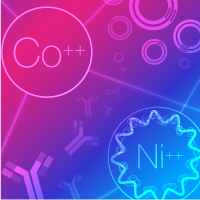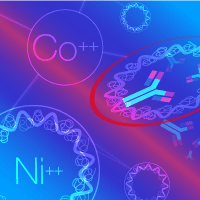His-tagged protein purification from crude cell lysates—TALON CellThru

TALON CellThru is a novel IMAC resin for purifying his-tagged proteins from crude cell lysates, sonicates, and fermentation harvests. This resin uses the same proprietary ligand as our TALON Metal Affinity Resin, but has larger beads (300–500 µm) which permit cellular debris to flow through without centrifugation. TALON CellThru Resin captures his-tagged protein directly from crude lysates in one quick step, minimizing protein degradation and generating higher yields of purified protein than conventional strategies.
TALON CellThru is a novel IMAC resin for purifying his-tagged proteins from crude cell lysates, sonicates, and fermentation harvests. This resin uses the same proprietary ligand as our TALON Metal Affinity Resin but has larger beads (300–500 µm) which permit cellular debris to flow through without centrifugation. TALON CellThru Resin captures his-tagged protein directly from crude lysates in one quick step, minimizing protein degradation and generating higher yields of purified protein than conventional strategies.
TALON CellThru Resin is ideal for purifying membrane-bound proteins or multi-protein complexes, which typically pellet with the cell debris during the lysate clarification step and are not available for binding to the resin. Because crude, nonclarified lysates can be applied directly to the resin, you can skip the centrifugation step, allowing membrane-bound proteins and multi-protein complexes to remain in the lysate where they can bind to the resin.
The resin consists of large agarose beads that can be packed into standard chromatography columns with large-pore frits to prevent column blockage. Particulate material flows between the beads while the soluble protein product is captured by the ion-exchange functional groups attached to the beads. The resin is ideal for use in expanded bed chromatography for recovering even higher amounts of protein and is recommended for applications such as high-throughput purification of his-tagged proteins from crude extracts. We also offer CellThru 10-ml Disposable Columns (with a filter pore size of 90–130 µm) that allow cellular debris to flow through easily.
Overview
- Purification from crude cell lysate
- Ideal for purification of membrane-bound protein or multiprotein complexes
- No copurification of proteins
- Low metal ion leakage
- Fast & easy protocol
More Information
Applications
Purification of protein from:
- Crude cell lysates
- Sonicates
- Fermentation harvests
Additional product information
Please see the product's Certificate of Analysis for information about storage conditions, product components, and technical specifications. Please see the Kit Components List to determine kit components. Certificates of Analysis and Kit Components Lists are located under the Documents tab.
Why choose TALON resin?
Obtain highest purity with cobalt resin
Prepare exceptionally pure his-tagged proteins from bacterial, mammalian, yeast, and baculovirus-infected cells.
Takara Bio USA, Inc.
United States/Canada: +1.800.662.2566 • Asia Pacific: +1.650.919.7300 • Europe: +33.(0)1.3904.6880 • Japan: +81.(0)77.565.6999
FOR RESEARCH USE ONLY. NOT FOR USE IN DIAGNOSTIC PROCEDURES. © 2025 Takara Bio Inc. All Rights Reserved. All trademarks are the property of Takara Bio Inc. or its affiliate(s) in the U.S. and/or other countries or their respective owners. Certain trademarks may not be registered in all jurisdictions. Additional product, intellectual property, and restricted use information is available at takarabio.com.





